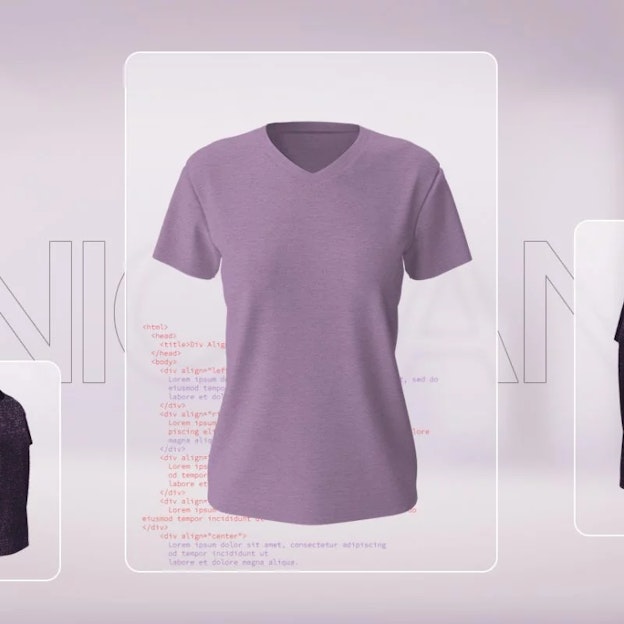The power of fashion ecommerce
Online fashion sales are among the highest of any industry. In fact, recent data shows that 13 of the world’s top 20 D2C brands occupy the fashion and apparel space, with fashion accounting for 23 percent of total online retail sales in the U.S. alone. Ordering clothes and apparel online is now commonplace—it’s something that the vast majority of us have done at least once, and a significant amount of people do it on a regular basis.
With ‘look and feel’ being so important in fashion—the first thing we do when in-store shopping is reach out and touch the item—it may seem counterintuitive that online sales are so healthy, with ecommerce transactions making up 21% of total fashion retail sales globally.
The rise of the ROPO and BOPIS boom in fashion
However, the lack of tactility and assurance of suitability when purchasing online is more than offset by the convenience of being able to browse, select, and buy an item online in minutes without leaving the comfort of your home. Add to this the ease of returning unwanted items for a full refund, and you have a situation in which online sales have become an indispensable revenue stream.
Most of these online orders are for delivery, but a growing number are of the ROPO (research online, purchase offline) or BOPIS (buy online, pick up in-store) persuasion. In fact, a hefty 55% of consumers explore products online before checking their availability in nearby physical stores.
See more: How to Reduce Returns in Fashion and Gain a Significant Advantage
The omnipresence of omnichannel in the fashion industry
In days gone by, there’s no doubt that highstreet stores were the leading public face of a brand. Through them, a fashion company had its main chance to shine by showcasing their best lines, a welcoming place to try on clothes, and a personal and expert one-on-one service.
These days, there are many more digital channels that fashion brands have to manage and constantly optimize—from websites to apps, social commerce, CTV, marketplaces, and even the Metaverse. Statista revealed that the global social commerce market alone is predicted to top $2.9 trillion by 2026.
Fashion brands that embrace all omnichannel elements can achieve extraordinary things—C&A’s app makes up 50% of its digital sales. AllSaints also proves that integrating a great-looking and intuitive app into an omnichannel strategy can pay dividends. Since its launch in March 2023, the app has been downloaded more than 75,000 times, yielding a significant portion of the brand’s total ecommerce revenue.
There’s an imperative in fashion to engage shoppers while putting forward the brand’s image and values in the best possible light. No channel can be ignored, and your brand message should permeate across all platforms. Developing a seamless omnichannel experience is a must for all fashion brands. The Harvard Business Review revealed that a significant 73% of customers use multiple channels during their purchase journey.
In fashion, omnichannel is very much the name of the game. And it’s backed up by revenue figures—using three or more channels with a campaign can bring a 494% increase in order rate than a single-channel campaign.
But how to harmonize these channels and combine them into one cohesive, consistent, and holistic shopping experience?
Top tips for omnichannel success in the fashion industry:
Leverage touchpoints. By analyzing data from different devices that consumers use to search for your products, you can curate a truly personalized journey based on shopper habits and preferences.
Assess early funnel behavior. Knowing what motivates shoppers early on gives you the best chance of delivering the right messaging at the right time.
Embrace the latest technology. There’s no more effective tool in online advertising than Deep Learning, the most powerful type of AI. It can analyze many times more touchpoints in real-time and swiftly adapt to the emergence of highly dynamic situations and trends.
Personalize to capitalize. Over 80% of consumers expect retailers to cater to their preferences, and 50% of all purchases are driven by personalization. Again, Deep Learning excels at this. Of course, personalization is for nothing if your creatives aren’t top-notch—they should always look great and carry the same personalized, on-brand message that your customers receive in-store.
Good to know: The 5 Must-Have Features of Retargeting Ads for a Fashion Brand
Master omnichannel and win big in fashion
Mastering omnichannel in fashion is a must to stand out in the context of off-the-charts competition in the industry. Digitally savvy natives are entering the fray daily with innovative strategies, and legacy giants have to avail themselves of the latest technology to protect and build on their market share, striving towards a goal as old as commerce itself–driving sales in the most efficient way possible. The digital era has brought many effective marketing tools to elevate brands and persuade consumers to buy and buy again. So why not use them?
The proven, award-winning marketing solutions of RTB House are underpinned by the most flexible and efficient form of AI out there—Deep Learning. It means that we consistently help the world’s leading fashion brands deliver superlative campaign results. Challenge us to do the same for you.
